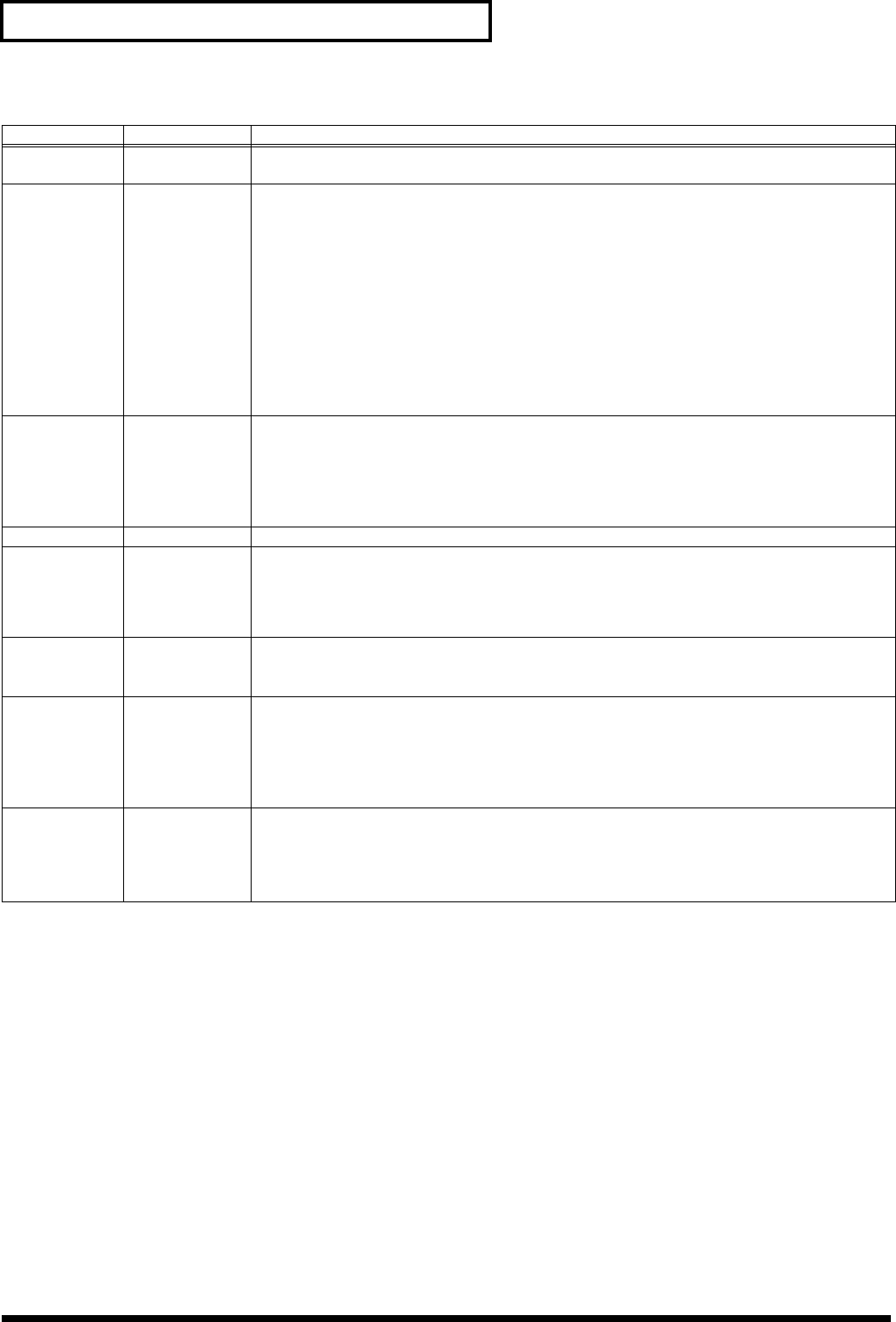
88
Playing Arpeggios
Parameter
Value Explanation
(Arpeggio Style)
U001–128 (User),
P001–128 (Preset)
This selects the arpeggio’s basic performance Style.
The arpeggio styles are kept in preset memory and user memory.
Grid 1/4, 1/8, 1/8L,
1/8H, 1/12,
1/16, 1/16L,
1/16H, 1/24
This sets the particular note division and resolution in a “single grid” used in creating the arpeggio in
an Arpeggio Style, and how much of a “shuffle” syncopation is to be to applied (none/weak/strong) to
it (grid type).
1/4:
Quarter note (one grid section = one beat)
1/8:
Eighth note (two grid sections = one beat)
1/8L:
Eighth note shuffle Light (two grid sections = one beat, with a light shuffle)
1/8H:
Eighth note shuffle Heavy (two grid sections = one beat, with a heavy shuffle)
1/12:
Eighth note triplet (three grid sections = one beat)
1/16:
Sixteenth note (four grid sections = one beat)
1/16L:
Sixteenth note shuffle Light (four grid sections = one beat, with a light shuffle)
1/16H:
Sixteenth note shuffle Heavy (four grid sections = one beat, with a heavy shuffle)
1/24:
Sixteenth note triplet (six grid sections = one beat)
* Grid settings are shared with the rhythm pattern.
Duration
30–120%, Full This determines whether the sounds are played staccato (short and clipped), or tenuto (fully drawn out).
30–120:
For example, when set to “30,” the length of the note in a grid (or when a series of grids is
connected with ties, the final grid) is 30% of the full length of the note set in the grid type.
Full:
Even if the linked grid is not connected with a tie, the same note continues to sound until the
point at which the next new sound is specified.
* Duration settings are shared with the rhythm pattern.
Motif
(See p. 89.) Refer to
Selecting Ascending/Descending Variations (Arp Motif)
(p. 89).
Velocity REAL, 1–127 Specifies the loudness of the notes that you play.
REAL:
If you want the velocity value of each note to depend on how strongly you play the keyboard,
set this parameter to REAL.
1–127:
If you want each note to have a fixed velocity regardless of how strongly you play the key-
board, set this parameter to the desired value.
OctRange -3– +3 This adds an effect that shifts arpeggios one cycle at a time in octave units (octave range).
You can set the shift range upwards or downwards (up to three octaves up or down).
* You can also use a REALTIME CONTROL knob to control this.
Accent 0–100 When you play arpeggios, the velocity of each arpeggiated note is determined by the velocity of the
notes programmed within the arpeggio style. You can adjust the amount (“spread”) of this dynamic
variation.
With a setting of “100,” the arpeggiated notes will have the velocities that are programmed by the ar-
peggio style. With a setting of “0,” all arpeggiated notes will be sounded at a fixed velocity.
* You can also use a REALTIME CONTROL knob to control this.
Part
(Displayed in
Performance
mode)
Part1–16 Here’s how to specify the part that will use the arpeggio in Performance mode. You can specify only one
part for playing arpeggios.
If a rhythm set is assigned to a part in Performance mode, you can play a rhythm pattern along with
the arpeggios.
* The part you select here functions for both the arpeggio and the chord memory functions.
Fantom-Xa_e.book 88 ページ 2004年10月22日 金曜日 午後2時3分


















